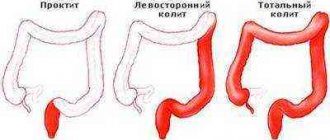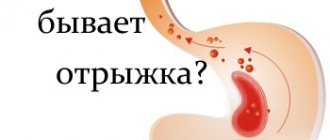Provoking factors
Factors that provoke nausea and weakness include any irritants that cause pressure surges in the patient, which causes an exacerbation of the pathology. In addition, the cause of increased blood pressure resulting in nausea may be recent severe stress, a change in climate zone, flight, etc.
Many people are wondering at what pressure nausea occurs.
Changes in weather conditions
Changes in weather conditions are fraught with deterioration in the well-being of people suffering from weather dependence. When barometric pressure changes, they may develop hypertension (more often than hypotension), which is accompanied by nausea. Smokers, as well as people who drink alcohol, have a certain risk of increasing or decreasing blood pressure. Nicotine promotes contractility of the vascular wall, as a result of which the vessels quickly wear out and become flabby. This contributes to the fact that in such people, under the influence of external factors, the vascular system cannot cope with its functions, and malfunctions occur in its functioning. This causes a violation of blood pressure, resulting in severe nausea.
Nausea with low blood pressure
Useful article? Share the link on VKontakte
A similar symptom of low blood pressure can occur for various reasons. It is important to determine the cause of this pathology and eliminate it. When blood pressure drops, the patient may experience not only nausea, severe headaches, vomiting, fainting, and poor coordination of movements. Such pathological conditions are caused mainly by the following factors:
- Exhaustion of the body, which is caused by forced or forced fasting.
- Nausea with pressure can be caused by the development of internal bleeding.
- Pathologies of internal organs (kidneys, adrenal glands, liver, pancreas, stomach, intestines).
- Physical or nervous stress.
- Chronic stress, disruption of daily routine, lack of sleep.
When pressure drops, many people do not experience discomfort and learn about such disorders only after a medical examination.
Weakness, dizziness, nausea and low blood pressure are the result of a person getting motion sickness in a car. When it is possible to eliminate the irritating factor and remain at rest for some time, the condition will return to normal. However, it often happens that the patient does not get better, then you should call an ambulance and give him first aid.
What other types of nausea can occur with blood pressure?
With high blood pressure
The main symptoms of high blood pressure are dizziness, nausea and vomiting.
Nausea with hypertension is usually provoked by a change in normal blood circulation in the brain. As a result of this, irritation of the vomiting centers occurs, which is the main reason that provokes this symptom. In addition to disrupting brain activity, high blood pressure causes a person to have an attack of fear and panic, which, in turn, provokes the release of adrenaline into the blood. As a result, changes occur in the functioning of the sympathetic nervous system, its tone rises, the patient feels nausea with pressure, and if such tension cannot be eliminated, he vomits.
Causes of pathology
Nausea is considered a negative sensation indicating a possible impending vomiting. The condition is characterized by a feeling of pressure in the epigastric region, in some cases weakness, dizziness, and drooling.
Nausea is caused by changes in blood pressure, which provoke destabilization of processes in the brain and spinal cord, impaired circulation, and the vomiting region receiving irritating impulses in the brain stem.
Typically, nausea and vomiting are observed with high blood pressure, which does not exclude their occurrence when it sharply decreases due to a lack of blood flow and a mismatch between brain signals and cardiac activity.
Pressure surges also have their own reasons, which should be taken into account when nausea occurs.
Increased blood pressure can be the result of pathological processes in the body:
- kidneys;
- endocrine, nervous system;
- hemodynamic disorders.
In other cases, essential hypertension is diagnosed, caused by:
- genetic predisposition;
- excess body weight;
- old age;
- lack of physical activity;
- unbalanced diet;
- abuse of alcoholic beverages, coffee, strong tea;
- systematic overwork, stressful situations.
Low blood pressure may accompany another disease, or occur with:
- lack of vitamins;
- excessive physical activity;
- heavy blood loss;
- nervous and physical exhaustion.
In some cases, the causes of blood pressure surges remain unknown.
Nausea accompanies not only high or low blood pressure, but also:
- increased intracranial pressure, cerebrovascular accident, traumatic brain injury, brain tumors, migraine, motion sickness, ear diseases;
- seeing unpleasant objects, feeling unpleasant odors;
- stress, extreme anxiety;
- entry into the body of toxic substances from the outside (low-quality food, alcohol and others);
- diseases accompanied by metabolic disorders (decompensated diabetes mellitus, chronic renal failure);
- radiation sickness;
- acute and chronic diseases of the gastrointestinal tract (peptic ulcer, oncology, cholelithiasis, cholecystitis, peritonitis, acute appendicitis, intestinal obstruction);
- osteochondrosis; liver diseases.
A negative state can be reflexively caused by a strong cough or any very severe pain.
Nausea at normal blood pressure
Attacks of nausea may not always be triggered by hypertension or hypotension. Normal blood pressure is characteristic of vegetative-vascular dystonia, when vascular spasm occurs, which results in disruption of the body’s autonomic system. The main symptom is nausea. In addition, the patient often experiences severe bowel dysfunction in the form of diarrhea, shortness of breath, even fainting, and a panic attack.
The causes of dizziness and nausea with normal blood pressure are unclear to many.
Other pathological signs
In such cases, the pressure is often within normal limits, but the following pathological signs develop:
- disorientation in space;
- general deterioration of health;
- hallucinations;
- fainting;
- hearing and vision impairment.
Nausea and systematic headaches with normal blood pressure are very alarming signs that indicate that you need to see a doctor.
The causes of dizziness and nausea at normal blood pressure must be identified.
Other reasons for the development of symptoms
Dizziness and nausea are signs that are present not only with hypertension and hypotension. Such symptoms may also indicate some other disturbances in the functioning of the body. The doctor, first of all, finds out the reason for the appearance of undesirable symptoms. This is necessary to select the most adequate treatment. Starting therapy on your own is extremely dangerous. In the absence of test results and medical education, it is impossible to find out the root cause of the deterioration of the condition. Based on this, it will also not be possible to choose a safe and effective treatment.
If nausea and dizziness occur, the patient may need to visit a psychologist. Often it is psychological well-being that influences the condition.
The head may feel dizzy if there are abnormalities in the vestibular system. In this case, dizziness provokes the appearance of a gag reflex. Deviations may arise due to the presence of disturbances in the functioning of the visual organs.
Sometimes dizziness is associated with gastrointestinal problems
There are two types of dizziness:
- peripheral;
- central.
Peripheral dizziness can be triggered by various inflammatory processes or disorders in the functioning of the cardiovascular system. This disease can occur in patients of different ages. As a rule, it does not cause much discomfort and is easily treated.
Central vertigo usually occurs due to problems with the functioning of the brain. It, just like peripheral one, can occur both in young people and in those who belong to the older age category. In patients under 45 years of age, central dizziness accompanied by nausea may occur with:
- migraine;
- multiple sclerosis;
- malignant neoplasms.
Dizziness can have different origins
In people over 45 years of age, central dizziness with a gag reflex usually occurs with significant cardiovascular disorders.
Dizziness with nausea can lead to significant complications. It is not uncommon for patients to develop certain phobias. Patients may experience a feeling of fear when:
- being in a narrow and small room;
- moving along a narrow passage;
- being in open space, etc.
Usually, phobias occur in those patients who once experienced severe and prolonged dizziness. Dealing with them is quite difficult.
As you age, your likelihood of developing high blood pressure increases
Probability of dangerous diseases
If, with normal blood pressure, persistent headache and nausea are observed, this may indicate the development of some very dangerous diseases, such as diabetes mellitus, osteochondrosis, malignant tumor processes, neurological pathologies, and problems in the functioning of the vestibular apparatus.
If the patient's blood pressure is normal, nausea can be caused by true, false, non-systemic or systemic dizziness, which manifests itself as a result of dysfunction of certain parts of the vestibular apparatus. To find out the causes of this pathological condition, you should visit a neurologist.
Other symptoms
Nausea and weakness with changes in blood pressure can be an independent symptom, or may be accompanied by some other manifestations that can help determine the cause of the underlying pathology.
With high blood pressure, such symptoms include:
- severe headache in the temporal regions;
- dizziness;
- redness of the skin;
- decreased vision and hearing;
- belching, digestive disorders;
- labored breathing.
With low blood pressure, in addition to nausea, the following may occur:
- severe headache in the occipital region;
- change in coordination;
- pale skin;
- numbness of the limbs;
- hearing and vision impairment;
- chills;
- respiratory impairment;
- severe weakness;
- fainting state.
What to do if you feel nauseous but not vomiting?
Additional symptoms
To protect themselves from hypertension, many people ask the question: when do symptoms of the disease begin to appear? This is individual for each person. Some people feel nausea and dizziness even at the slightest deviations in blood pressure from normal, while others may not feel them at all. There are times when a person simply faints on the street, and then it turns out that he has had a stroke. At the same time, the patient did not feel any noticeable symptoms.
With increased blood pressure and nausea, other symptoms appear that are characteristic of a disturbance in the functioning of the cardiovascular system. Nausea itself is unstable; it can worsen and weaken. Also, along with this, the person experiences discomfort in the mouth, esophagus and stomach. People tend to attribute the first such manifestations to food poisoning.
Symptoms:
- Headache, which is localized in the occipital region.
- Dizziness.
- Vomit.
- Pre-fainting state.
- The person experiences increased sweating, salivation, and a frequent urge to urinate.
When adrenaline is released, a person feels anxiety and fear for his life, and a panic state develops. There is a sudden loss of strength. Swelling of the face and hands gradually begins to appear.
If such symptoms appear, you should urgently seek help from specialists, as this can lead to a stroke or heart attack.
When blood pressure rises with nausea, pulse pressure also increases significantly. This means that adrenaline levels increase dramatically. If it is in excess, heparin is broken down. This significantly increases blood glucose levels. Adrenaline also affects skeletal muscles, so the level of lactic acid increases.
Attacks of dizziness are also called vertigo. In this case, there is always pain of vague localization. Feeling dizzy with sudden changes in the body - bending, turning. Therefore, it is recommended to take a semi-sitting position.
A hypertensive crisis is registered when the blood pressure is 200/110 mm Hg. Art. and above that. In this case, various symptoms appear due to a sharp spasm of the arterioles. Typically, nausea, dizziness, pain in the heart and increased heart rate (as a result of tachycardia), general weakness, tinnitus, pain localized in the eyes and head.
If the patient begins to vomit profusely, this is the first sign that irreversible changes in the brain are occurring – a stroke.
How to eliminate nausea when pressure changes
The question of how to get rid of such a symptom should be decided by a specialist. To do this, it is necessary to carry out appropriate diagnosis of concomitant diseases that can cause an increase or decrease in pressure. However, in some cases, when such a pathology does not occur systematically, but is a consequence of the influence of certain external factors, provided that blood pressure is correctly assessed, some traditional medicine or medications can be used to eliminate pressure nausea.
First aid in a crisis
What to do if high blood pressure is detected, and it is already clear that vomiting is its consequence? A number of urgent measures need to be taken.
If you feel sick from pressure, it is better not to waste time on home measures, wondering what to do, but immediately call an ambulance or see a doctor.
It is almost impossible to get rid of nausea with high blood pressure on your own (and it will definitely take more time than with a doctor).
It is recommended to take certain measures while waiting for an ambulance:
- take a comfortable position, try to move less;
- apply a cold compress to your forehead, immerse your feet in hot water;
- provide a flow of fresh air;
- measure blood pressure every 20 minutes;
- take a diuretic;
- If your doctor has previously prescribed medications, take them in the prescribed dose.
You cannot take new medications on your own. You need to consult a doctor so as not to provoke new surges in blood pressure.
It is strictly forbidden to try to speed up the process of lowering blood pressure by taking repeated doses of the medicine. This can only worsen the condition, lead to changes in blood pressure, and a new crisis.
A hypertensive crisis can cause a stroke, so you need to monitor the symptoms and consult a doctor immediately.
Medication methods
In order to get rid of nausea with high blood pressure, you can take a tablet of the drug “No-Spa”, which will help relieve vascular spasms and relax smooth muscles.
If, with slightly increased blood pressure, the patient is bothered by vomiting, you can use the drug “Spazmalgon”, which acts similarly to “No-shpe”, but also relieves pain. These are antispasmodic medications that will help eliminate spasms, nausea and vomiting due to pressure. Blood pressure increases and nausea develops with severe poisoning, so the patient is advised to take diuretics, vasodilators and antihypertensive drugs.
If the headache does not stop and the patient feels sick from the pressure, you need to call an ambulance, as complications such as myocardial infarction or stroke may occur. If your blood pressure drops sharply, you can take Nootropil, Citramon, or Glycine. After this, it is recommended to lie down and wait until you feel better.
The antiemetic drug is Cerucal, but its use must also be agreed with a specialist, since this medicine has many side effects and contraindications and is used, as a rule, only in cases of acute, uncontrollable vomiting.
What else should you drink for nausea and high blood pressure?
Causes of violation: who is at risk
Vomiting with high blood pressure can occur suddenly, including in a person who has never complained of a similar condition before. The thing is that hypertension can be asymptomatic for a long time, without manifesting itself in any way. Stress, alcohol abuse, etc. can provoke a sharp jump in blood pressure followed by vomiting.
GB itself develops against the background of:
- sedentary lifestyle;
- poor nutrition;
- overweight, obesity;
- nicotine and alcohol addiction;
- pathologies of internal organs.
At risk are people whose age is over 35-45 years (depending on gender). Blood pressure can rise after physical overexertion, especially in hot weather, eating spicy and fatty foods, or lack of sleep. Withdrawal of medications prescribed for hypertension can also result in increased blood pressure followed by vomiting.
If a violation occurs, it is important to urgently call an ambulance. On your own at home, you need to take the remedy recommended by a specialist and lie down on the sofa, always on your side, so as not to choke on vomit.
Traditional methods of help
Any lozenges that, when sucked, make breathing easier, can help eliminate an attack of vomiting. When blood pressure drops or rises sharply, in addition to medications, you can use traditional methods. However, before using one of them, you should consult your doctor.
A recipe made from herbal ingredients helps normalize blood pressure. Take St. John's wort, chamomile, mint and lemongrass in equal proportions, chop, pour into a thermos and add hot water. The infusion is made for 3 hours, after which it should be drunk throughout the day with a spoonful of honey and lemon. By taking it for two months, you can improve the functioning of the cardiovascular system, increase the elasticity of blood vessels and normalize blood pressure.
If you feel very nauseous with high blood pressure, a slice of orange helps to eliminate the attack of vomiting, which must be put in your mouth and dissolved until the nausea subsides. Various sucking lollipops have a similar effect, which frees up breathing and helps get rid of vomiting.
It is known that approximately 30% of the adult population suffer from the problem of pressure changes, and with age the prevalence of pathology increases to 65%. The consequences of this often include irreversible damage to the heart, kidneys, brain, blood vessels, and eyes. In the later stages, coordination is impaired, weakness in the limbs occurs, vision deteriorates, memory and intelligence decrease.
Dizziness with high blood pressure: causes, first aid, treatment
Dizziness with high blood pressure is considered a normal condition and is one of the symptoms of this pathological abnormality. But why does this happen, and how to get rid of it? This is exactly what we will talk about in this article.
Features of dizziness in hypertension
People suffering from high blood pressure often experience dizziness. In turn, scientists refute this fact. According to research, the sensation of “floating” objects occurs due to pressure surges (sharp decreases or increases), and this is also associated with a violation of the oxygen saturation of the body.
Changes in blood pressure are accompanied by nausea, in rare cases vomiting, general weakness, a foggy state, pain in the temples and back of the head. And dizziness can also appear due to a sudden change in the position of the body (squatting, bending and lifting).
What to do if you feel dizzy with high blood pressure?
With high blood pressure, dizziness is accompanied by other symptoms: general weakness and a feeling of numbness. Therefore, when providing first aid, you need to follow these rules:
- Place the patient on his back and free him from accessories (belt, tie, scarf, etc.), unbutton the top buttons on his clothes.
- Provide oxygen access: open windows in the room. This will help saturate the body with the missing air.
- The patient needs to take diuretic drugs. These medications will help cope with nausea and remove excess fluid from the body, which often causes vomiting. If it is not possible to give the drug, mint chewing gum or lozenges will help.
Treatment of dizziness with medication should only be carried out after consulting a doctor who:
- will select the right drug;
- conduct a diagnostic examination;
- will describe the regimen and dosage of taking the medication.
The most effective drugs for dizziness are the following:
- "Cavinton" or "Betaserk". The pharmacological features of the medications are to improve blood supply to the brain and weaken harmful reactions caused by the action of amino acids.
- “Cinnarizine” and “Flunarizine” normalize cerebral circulation and prevent attacks that can occur due to a failure in the supply of oxygen to the cells.
- To normalize the vestibular apparatus and the functions of the inner ear, take Reklanium or its analogue Seduxin.
- For frequent dizziness, which is accompanied by nausea, you should take Flunarizine. The product can be drunk no more than 5 times a day.
Remember that all medications are taken after consultation with a specialist and in compliance with the required dosage. And ignoring dizziness with high blood pressure can cause stroke and heart attack.
Dizziness (in other words, vertigo) can be called a reaction of the body that adjusts to pressure surges.
That is why dizziness is accompanied by drowsiness, nausea, sudden darkening of the eyes and changes in coordination of movements.
Medicines, folk remedies and proper nutrition will help you get rid of unpleasant sensations. If dizziness does not go away after a hypertensive crisis, the doctor prescribes the following medications:
- Medicines that help remove excess fluid from the body (diuretics), these include Hypothiazide, Furosemide.
- Antispasmodic drugs include Papaverine and No-Shpa.
- Drugs that reduce peripheral vascular resistance and blood pressure are Perindopril, Captopril, Lisinopril.
For minor dizziness, doctors recommend using a high blood pressure patch. The basis of the patch is medicinal substances, crushed to mini-particles (gastrodia root, sage root, lower part of the eucommia bark, etc. are used). The patch has the following effect:
- relieves dizziness;
- enhances the effect of medications;
- nourishes the brain;
- relieves nervousness and relieves fatigue;
- improves the elastic condition of the walls of blood vessels.
Before using the patch, consult your doctor. If the patch is used incorrectly, burning, itching, redness of the skin, and increased vertigo may occur.
For dizziness caused by high blood pressure, you can use the following recipes:
- Rosehip decoction. To do this you will need 100 grams of dried rose hips and 1 liter of water. Pour water into a container and put on fire. Rinse the rose hips and pour boiling water over them. When the water boils, pour it onto the rose hips. Leave for at least 20 minutes. It is not necessary to strain. Drink morning and evening as tea.
- Natural juice. You will need: 5 carrots, 2 fresh beets, 4 tablespoons of honey, 1 lemon. Using a juicer or manually using a grater, extract juice from carrots and beets. Mix with honey and lemon juice. Leave for 10 minutes. Take 1 tablespoon one hour before meals.
- Medicinal infusion. For preparation, you can take dill seeds or dried clover flowers. Pour boiling water (0.5 liters) over the flowers (seeds) and place in a steam bath. Boil for 10 minutes. Leave for 40 minutes. Take before meals three times a day.
- Sunflower seeds. Oven-dried seeds should be consumed 60-70 grams per day. They help enrich the body with vitamin E.
- Decoction for high blood pressure. Pour 40 grams of hawthorn, 40 grams of marsh dried grass and the same amount of mistletoe leaves into a container. Pour 1 liter of boiling water. Leave for 30 minutes. Strain. Take as tea.
- Lingonberry tea. Pour 1 tablespoon of lingonberries into 1 liter of boiling water. Put on fire and boil for 5 minutes. Leave for 20 minutes. Take every morning.
- Infusion based on red clover. You will need 3 tablespoons of clover flowers per 0.5 liters of hot water. Leave for 20 minutes. Take 1 tablespoon of warm infusion before bed for 3 months, after which a break of 10 days is necessary.
- If there is a sharp rise in pressure, it is necessary to apply mustard plaster to the shin area and shoulders. Lie on your stomach with your arms outstretched for 20 minutes. You can put Corinfar under your tongue.
Prevention
In order to prevent the appearance of dizziness, it is necessary to treat concomitant chronic diseases (hypertension, diabetes mellitus, etc.) not only with medication, but also to adhere to the basic rules of prevention:
- The prophylactic medicine is Betaserc. Relieves severe dizziness. Does not cause drowsiness. Normalizes mental state.
- Try not to overwork your body. Avoid stressful situations. Spend more time walking in the fresh air, and don’t forget about getting good sleep. You can engage in light sports: walking, yoga and swimming are ideal.
- Eat healthy. Eliminate fatty, salty and spicy foods from your diet. Eat foods that contain vitamins and minerals. Eat more vegetables and fruits.
- Try to keep your weight normal, as excess weight contributes to the development of hypertension. To do this, choose foods or dishes that are low in calories. Eat often, but in small portions. Overeating contributes to spikes in blood pressure.
- Monitor your blood pressure readings (daily if possible). You can keep a notebook and write down all the measurements. Then show it to a specialist who will make a diagnosis faster. Undergo medical examinations and take the necessary tests.
Some recommendations for people suffering from chronic dizziness:
- If you have high blood pressure, you need to move actively, be in the fresh air more often, and do light exercises.
- For people with low blood pressure, it is recommended to drink natural coffee and eat dark chocolate.
- Completely quit smoking and drinking alcohol. This applies to patients with both high and low blood pressure.
All about dizziness with high blood pressure (video)
Learn from this video about all aspects of dizziness with increased blood pressure: the causes of its occurrence and actions during the manifestation of the symptom.
Now you know everything about dizziness with high blood pressure. And also about the unpleasant consequences of the patient’s inaction. Therefore, contact specialists in a timely manner, strictly adhere to preventive measures and all doctor’s instructions.
Source: https://serdce.biz/simptomy/golovokruzhenie-pri-vysokom-davlenie.html
Massages
For hypertension and hypotension, the patient is prescribed special massages that help relax the body, normalize blood circulation and blood pressure. Acupressure massage is very popular, when it affects certain points responsible for the functioning of specific organs and systems. After this, the patient’s condition noticeably improves, blood pressure problems are eliminated, and the patient feels significant relief.
What to do if you feel nauseous but not vomiting?
A good folk remedy that helps get rid of pressure surges and normalizes the condition of blood vessels and their walls is an infusion of lemon and garlic. To make it, you need to take several large lemons, which should be washed and chopped in a meat grinder along with the peel. Chopped garlic is added to the resulting mixture - two heads, filled with water and infused for five days. The infusion is stored in the refrigerator and taken half a glass daily.
In addition, there are some other techniques that help normalize the patient’s condition with nausea associated with increased blood pressure, for example, massage of the temples. It is carried out with your fingertips using light pressure on the temporal lobes. In this case, you can lubricate these areas with “Star” balm, which also helps eliminate vascular spasms in the head. The balm can also be applied to the bridge of the nose and the back of the head.
We looked at what to do with nausea and pressure.
Many people know what dizziness and nausea are. Similar symptoms are characteristic of many diseases and in medical practice there are about 80 of them.
To eliminate attacks, you need to know the main causes of their occurrence, as well as possible treatment methods.
How to help yourself
A sudden rise in blood pressure can occur when there are no close people nearby, much less specialists capable of providing first aid. In this case, doctors advise, before the ambulance team arrives, to take consistent actions that will help make you feel better:
- It is necessary to measure blood pressure using a tonometer and make sure that it is elevated, and not vice versa. This is important because hypotension can also be accompanied by vomiting, and treatment for it must be completely different.
- It is recommended to lie on the sofa with a pillow or bolster under your back.
- All physical work should be postponed, even if it gets a little better. This can only make the situation worse.
- After consultation with a specialist, you need to take a medicine that lowers blood pressure.
- If you have a severe headache, it is recommended to take one of the diuretics that was previously prescribed by a specialist after diagnosing hypertension.
- As blood pressure rises, your heart may begin to hurt. In this case, it is recommended to take Nitroglycerin.
In the process of self-treatment, it is important to remember that the pressure should be reduced very carefully so as not to provoke a deterioration in the general condition. In the future, after stabilization of blood pressure, you should visit a doctor and get recommendations for further treatment. It may be necessary to replace previously prescribed medications and adjust your lifestyle, including nutrition.
It is imperative that a patient with hypertension needs to monitor his or her well-being, live a measured, calm life, avoiding stressful situations. It is important to normalize your sleep and rest schedule, devoting at least 7-9 hours to sleep. There should be no bad habits for hypertension and its prevention.
Dizziness and nausea
When a person begins to feel dizzy, there is a feeling that objects are moving or spinning around him.
This condition is a common complaint of many people with various pathologies. The symptom cannot be ignored and possible causes must be identified.
Attacks of nausea in people are accompanied by a desire to empty the intestines, in other words, vomiting occurs. Such symptoms are also possible with various pathological processes, especially with poisoning or low blood pressure.
Local causes include intoxication, poisoning and infection of the intestines, when the mucous membrane of the gastrointestinal tract begins to be poisoned by poisons.
As a result, the human body tries to get rid of pathogenic substances, resulting in dizziness, nausea, and possible headache.
In the presence of cerebral, the causes of the problem begin as a result of a lack of oxygen to the body, as well as a lack of nutrients to the brain. These reasons lead to the desire to empty the stomach.
This state and reaction appears because the brain tries to save energy for normal functioning and survival, since a lot of energy is spent on digesting foods.
Types of dizziness
There are two main types of dizziness:
- Central, which begins as a result of brain diseases.
- Peripheral, which begins during lesions of the vestibular nerve.
In addition, dizziness can be divided into several types:
- System. This condition begins when certain systems malfunction. For example, muscular, visual and others.
- Physiological. In this case, the cause is emotional stress, which is provoked by stressful situations, lack of glucose or fatigue.
To understand what causes dizziness and nausea, it is important to understand the possible causes that occur most often.
Main reasons
All the reasons are difficult to parse, remember and describe, but there are some of them that cause dizziness and nausea most often:
- Cervical osteochondrosis. This diagnosis manifests itself in the form of dizziness, nausea, and with different positions and changes in the body, symptoms may intensify or disappear. Most often, signs appear when turning and lifting the head. At the same time, the patient’s gait begins to change, pain appears in the neck area, head movements become constrained, a tingling sensation appears in the hands, and loss of space is possible.
- Inflammation in the middle ear. The phenomenon is called a labyrinth, in addition to dizziness, nausea in patients, hearing worsens or completely disappears, and there may also be discharge from the ears.
- Vestibular neuritis. With this diagnosis, a person begins to experience severe dizziness and nausea if he gets up from a lying or sitting position on his feet, and also turns his head. The disease is characterized by an abrupt onset and rapid relief, which disappears in just two days. Further, symptoms may occur periodically and not in such a severe form.
- Meniere's disease. This is a condition in which there can be not only dizziness, nausea in this case is replaced by vomiting, hearing begins to deteriorate and tinnitus appears.
- Head injuries. If there were bruises, concussions and other head injuries, then the very first symptoms are severe dizziness and nausea. Such signs may vary in intensity depending on the severity of the injuries.
- Stroke. With this pathology, the patient’s symptoms will be long-lasting, develop and are felt acutely, which interferes with a normal life. The patient may have severe weakness, double vision, impaired speech and loss of coordination.
- Benign positional vertigo. This condition becomes several times stronger if a person changes the position of the body. A test is performed to diagnose pathology. The doctor sits the patient on the edge of the couch, asks him to tilt his head back for a minute, after which he must quickly lie down and turn his head slightly to the side. If the pathology is confirmed, the doctor will notice involuntary eye movement in one plane.
- Diseases of the eye muscles. If a person has various eye diseases, then there will be various flashing images before the eyes, which causes dizziness. Such symptoms often disappear within a short time if the image is stopped flashing.
- Basilar migraine. The main symptoms, nausea, always accompany the pathology and appear approximately 30-50 minutes before the onset. Often there is vomiting, cloudiness in the eyes, as if sand had been poured in, tinnitus and headache are possible.
- Prilymphatic fistula. Patients suddenly lose hearing on one side, and noise begins in the second ear, followed by vomiting and other troubles.
- Tumors. If there are tumors in the brain, the patient will experience obvious dizziness and nausea. Similar sensations can be together or replace each other. In certain situations, discomfort changes with changes in body position. A severe headache appears.
- Medications. Many medications have side effects that include dizziness, headache and nausea. These symptoms are common with medications for seizures, antibiotics, sedatives, or heart medications. If a side effect occurs during the treatment of a disease, you should immediately tell your doctor about the problem. You may need to change the medicine, reduce the dosage, or stop using it altogether.
- Diseases of the cardiovascular system. With high levels of cholesterol in the blood, people experience attacks of nausea and dizziness. Often the problem occurs against the background of atherosclerosis. Due to the narrowing of blood vessels, a lack of oxygen occurs, and various unpleasant sensations develop. Often headaches, memory loss, lack of attention and inability to concentrate, as well as rapid fatigue begin.
- Hormonal imbalances. This condition appears to a greater extent in women during menopause, menstruation and during pregnancy. Often dizziness, nausea, headache and other discomfort are normal, but can also indicate various diseases.
- Stress. With frequent emotional stress, constant stress in people, the body may not function properly, it begins to malfunction and vomiting, nausea occurs, stool changes, weakness, and dizziness are possible.
- Anemia and poor nutrition. If the human body lacks nutrients or there is infection, poisoning of the stomach and intestines, then unpleasant symptoms appear, including attacks of nausea and dizziness.
- Problems with blood pressure. With unstable pressure readings, there may be a sudden onset of discomfort, which is complemented by pain and vomiting. High and low blood pressure can make a person feel cold or hot.
- Poisoning. When drinking alcohol in large quantities or being poisoned by food, the gastrointestinal mucosa begins to become irritated, nausea and other sensations begin. Vomiting, headache and other symptoms often occur.
- Seasickness. During constant vibration or similar vibrations of the human body, after a while the head begins to feel dizzy and possible nausea.
These are the main reasons that appear in people most often. Also, dizziness and other symptoms can occur in old age, as various changes begin in the body.
To determine the exact causes of dizziness and nausea, you will need to undergo a comprehensive examination by a doctor, which can determine the origin of the symptoms and prescribe treatment.
High blood pressure nausea dizziness treatment
Increased blood pressure, accompanied by dizziness and nausea, is a serious reason to urgently call an ambulance. Symptoms may indicate not only a developed hypertensive crisis, but also be signs of a heart attack or stroke. Only timely medical care will prevent inevitable consequences for the body.
Causes
The most important cause of high blood pressure, nausea and dizziness is a hypertensive crisis.
People who have long known about their disease, when nausea, dizziness, headaches appear, know that the indicators are off the charts. But those who first encountered such signs may not realize the seriousness of their condition, attributing it to fatigue or poisoning.
It has been established that an increase in blood pressure above 140/90 is hypertension. Hypertension is a disease characterized by an increase in blood flow to the brain when exposed to adverse factors on a constant basis.
It is worth noting that for some people these indicators will not be felt, while for others even small fluctuations will affect their condition. This is due to the fact that with frequent surges in pressure, the body develops a habit and symptoms practically do not appear, unless, of course, the indicators reach high limits.
Small fluctuations are well felt by those suffering from hypotension (low blood pressure) or those who have experienced a sharp jump for the first time. For such categories of people, an increase in values within 140/90 will manifest itself as high blood pressure and be accompanied by nausea, dizziness, vomiting, and headache.
It is worth noting that an increase in pressure that is tolerable or not noticeable by a person must be treated. This is due to the fact that with strong blood pressure, the blood vessels quickly thin out and also lead to their blockage.
The simultaneous appearance of symptoms such as hypertensive crisis, nausea and dizziness may indicate the onset of a stroke (ischemic or hemorrhagic).
Symptoms
Blood circulation provides oxygen to brain cells. If blood pressure increases, the vessels become toned, and the lumen in them narrows. This condition is called vasoconstriction, and it often leads to dizziness.
If attacks are repeated over a long period of time and no treatment is provided, then the vessels are structurally modified. Irreversible processes cause disruption of blood flow even at normal pressure. The vessels lose their elasticity, become thinner, and become blocked by blood clots, which results in dizziness.
Nausea is an uncomfortable state of the pharynx and epigastric region that precedes vomiting.
Nausea and increased blood pressure are two interdependent concepts. The process of increasing blood flow to the brain has a specific mechanism. As a result, an upward change in pressure increases the amount of circulating blood and cerebrospinal fluid.
The body senses the changes taking place and turns on protective functions, signaling that there is excess fluid in the body and it needs to be removed. Then he tries to get rid of it by any means: nausea appears, turning into vomiting, frequent urination, increased sweating.
There is another explanation. When there is a sharp jump in pressure, adrenaline is released into the blood, and as a result of its action, a person develops panic attacks and fear. This activates the sympathetic division of the autonomic nervous system, which reacts with nausea and vomiting.
If nausea is a symptom of hypertension, then it gradually turns into vomiting in the presence of other signs (diarrhea, fever, dizziness, tachycardia). In advanced conditions, pain appears behind the sternum.
When hypertension progresses to the stage of stroke, the following signs also appear:
- Severe headache that is not relieved by painkillers.
- Dizziness.
- Slurred speech, which is caused by paralysis or weakening of the tone of the facial muscles. It can be manifested by drooping of the corner of the lips when smiling, with the tongue turned to the side, and immobility of part of the face.
- Weakness in the limbs. A person cannot shake hands or lift their limbs up.
A hypertensive crisis, in addition to increased blood pressure, is also characterized by:
- changes in the skin (redness of the face);
- dizziness;
- numbness of the limbs;
- headache ;
- nausea leading to vomiting.
Diagnosis
To examine a person and determine the cause of dizziness and nausea, doctors pay more attention to collecting complaints.
The doctor clarifies all the symptoms, the nature of the attacks and their duration, as well as additions in the form of other sensations.
The possibility of damage to the head, hearing or vision is determined. After this, it is necessary to clarify what medications the patient uses, whether he drinks alcohol or not.
After collecting such data, various procedures are prescribed, which can be used in combination or separately. It all depends on the information collected.
For a comprehensive examination, the following methods are used:
- Collecting blood for analysis.
- Electroencephalography
- ECG.
- Ultrasound of various organs.
- Radiography.
- Brain MRI.
- Pure-tone audiometry.
After diagnosing and establishing the cause, doctors prescribe the necessary treatment.
If dizziness or nausea occurs, you need to seek help from specialists, namely a neurologist and therapist.
Such doctors can conduct the necessary examination and also determine the causes. But they cannot always establish a diagnosis, so the help of other doctors may be needed:
- ENT, if hearing problems occur.
- Traumatologist, if there are head and spine injuries.
- Oncologist, when neoplasms are detected.
- Gynecologist, if pregnancy or menopause is suspected.
- Hematologist if a person has anemia.
- A cardiologist who deals with diseases of the heart and blood vessels.
Determining the cause may take a long time, but is a mandatory procedure before therapy.
Treatment methods
In general, treatment should be carried out under the guidance of a doctor, but any person needs to know basic first aid measures. If dizziness or nausea begins, then you need to:
- Place the patient on a flat surface and ventilate the room to bring in fresh air.
- You need to take 10 drops of atropine sulfate.
- If you lose consciousness due to dizziness, you should give ammonia to smell.
- In case of strong emotional stress, you can use sedatives, as well as various tranquilizers. For example, make an infusion of valerian root and motherwort. When using medications, give “Novo-passit”, “Seduxen”.
- If your blood pressure drops, strong brewed sweet tea can raise it.
- If the condition is very bad, dizziness is severe, then it is better to call an ambulance.
Treatment is aimed at removing the underlying causes and is carried out based on the diagnosis. If you simply stop dizziness and nausea, the symptom may appear again and again.
The following remedies can be used to treat and relieve symptoms:
- Vestibulolytic drugs: Diazepam, Meclozin, Lorazepam.
- Dehydration treatment is used with Eufillin and Mannitol, which are injected into a vein.
- A constant state of nausea and vomiting can be relieved with Cecural or Metoclopramide.
- A patch containing scopolamine can help with seasickness.
Treatment can be carried out using manual therapy, as well as a therapeutic type of massage or regular physical exercise, which the doctor will recommend.
Self-therapy
Self-treatment does not make any sense, but whatever therapy is prescribed by the doctor, the patient can significantly alleviate the condition and speed up recovery.
To do this, just use some recommendations:
- Avoid dehydration and normalize your drinking regimen.
- Get rid of bad habits, drinking alcohol and drinking coffee frequently.
- Adjust your diet to be balanced and healthy.
- Spend more time outdoors.
- Try not to drive.
- To improve your mental state, relax more.
- During dizziness, do not close your eyes, but concentrate on objects that cannot move. If possible, just lie down or sit down.
- If there is a feeling of loss of consciousness, you need to sit down and lower your head between your knees.
For prevention, it is recommended to lead a healthy lifestyle, as well as visit doctors at least once a year for a routine examination of the whole body.
This will prevent the development of diseases, and if they do appear, they can be quickly cured at an early stage.
To maintain normal blood pressure (prevention)
What to do in order to forget about nausea with high blood pressure? First of all, you need to change your lifestyle:
- add gentle physical activity to your regime on an ongoing basis - at least 2-3 times a week;
- take a walk in the fresh air every day;
- sleep eight hours a day.
Compliance with the work and rest regime will help get rid of sudden increases in blood pressure.
Losing body weight will affect the entire blood volume in the body, which will bring blood pressure back to normal.
Following these rules will eliminate situations where symptoms of blood pressure disorders occur, lead to the next phase of improved health, and improve the quality of life.










